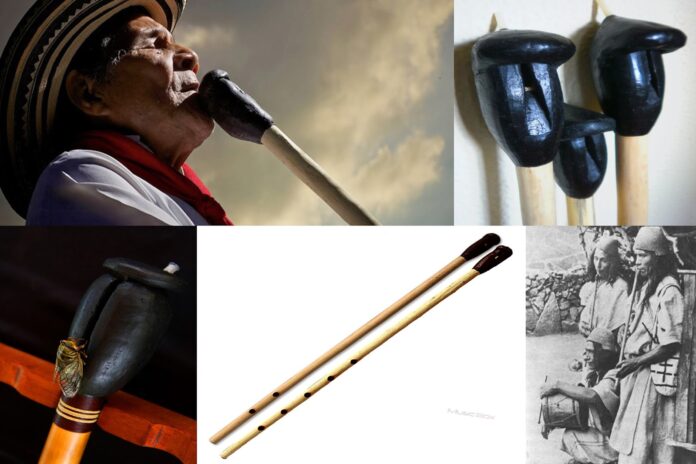The Kuisi or Colombian Gaita is a typical musical instrument of Colombian folklore, it has its origins in the ethnic groups Kogi indigenous people and the Arhuacos of the Sierra Nevada de Santa Marta, is used in different musical rhythms that are included in the so-called “Bagpipe music”, among which we can find the joint, the cumbia, the merengue, the puya, the instrumental bagpipe, etc.
The Kuisi is an instrument of great importance in traditional Colombian music, becoming an essential part of its identity. Its role in almost all the traditional musical variations of the Caribbean coast is unique, its sound sweetens the melody and accompanies the singer. In such a harmonious way both in cumbia and in porro, it reveals its ability to adapt so flexibly to each genre.
Bagpipe Classes:
Existen tres variaciones o clases de gaitas cada una con un papel único a la hora de ser ejecutadas: La Gaita hembra (kuisi bunsi en dialecto kogui): Tiene de 5 orificios, proporciona la melodía; La Gaita macho (kuisi sigi en dialecto kogui): Tiene dos orificios digitales y acompaña a la gaita hembra; La Gaita corta: Tiene seis orificios, esta suele tener una tesitura relativamente más amplia. Es utilizada como instrumento solista. Llamada también “machiembriá”, “machiembriao” o requinto. (Lea También: El Sombrero Vueltiao un gran símbolo cultural colombiano)
Construction or elaboration of the Bagpipe:
Traditionally the size of this is defined by the length of the builder's arm, so it is usually between 70 to 80 centimeters long; among the Kogis they are up to two feet, or 60 centimeters, long and are made of reed by the piper himself (never a woman). The length is measured as 3 times the expansion between the extended thumb and the little finger plus the extension between the thumb and index finger. Then the holes are made with a distance between them measured by the width of the two fingers plus half the width of the thumb. They are made from a cactus from which the thorns are removed. The center is removed, moistening first and then piercing with an iron rod. The stem of the cactus is thicker at one end, this will go on top coupled with the beeswax head that carries the piece of bird feather. Although the instrument is slightly conical on the outside, its bore is cylindrical.
The kuisi bunsi has five holes. The mouthpiece, a prong made from a large bird feather, is embedded in the head at an angle and distance from the edge of the air column, which varies from instrument to instrument.
The following video is a song where the bagpipes are the protagonist:




